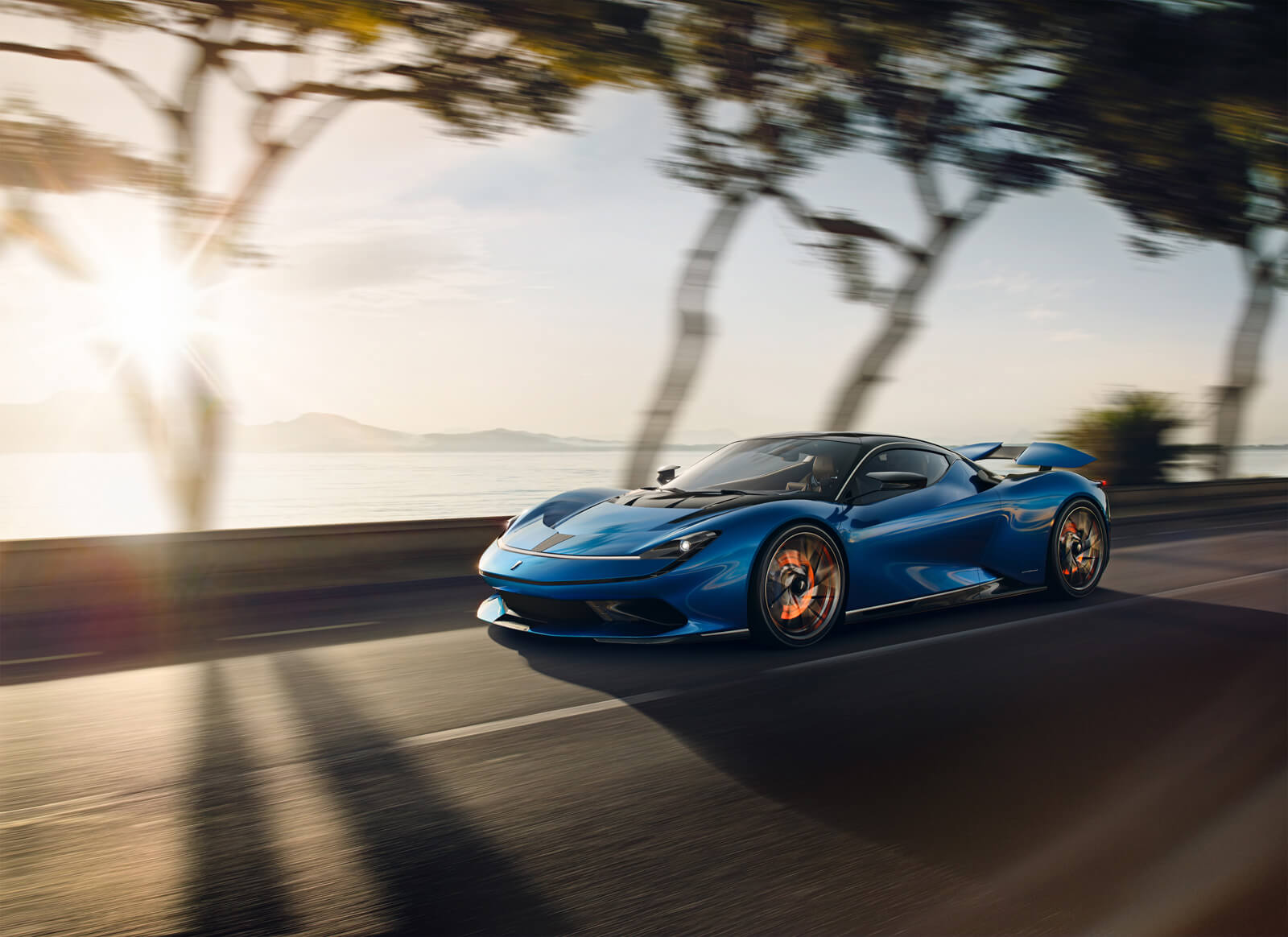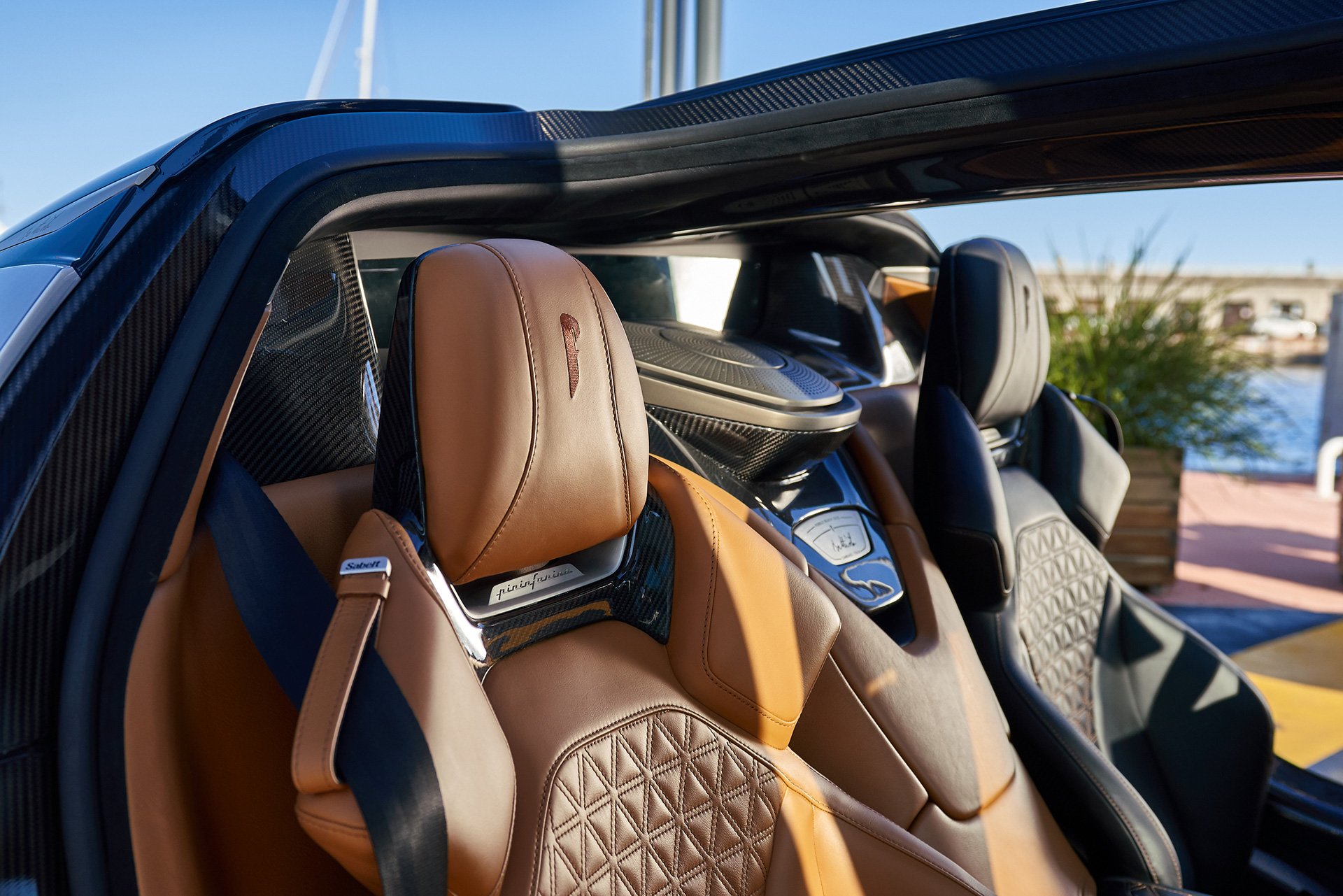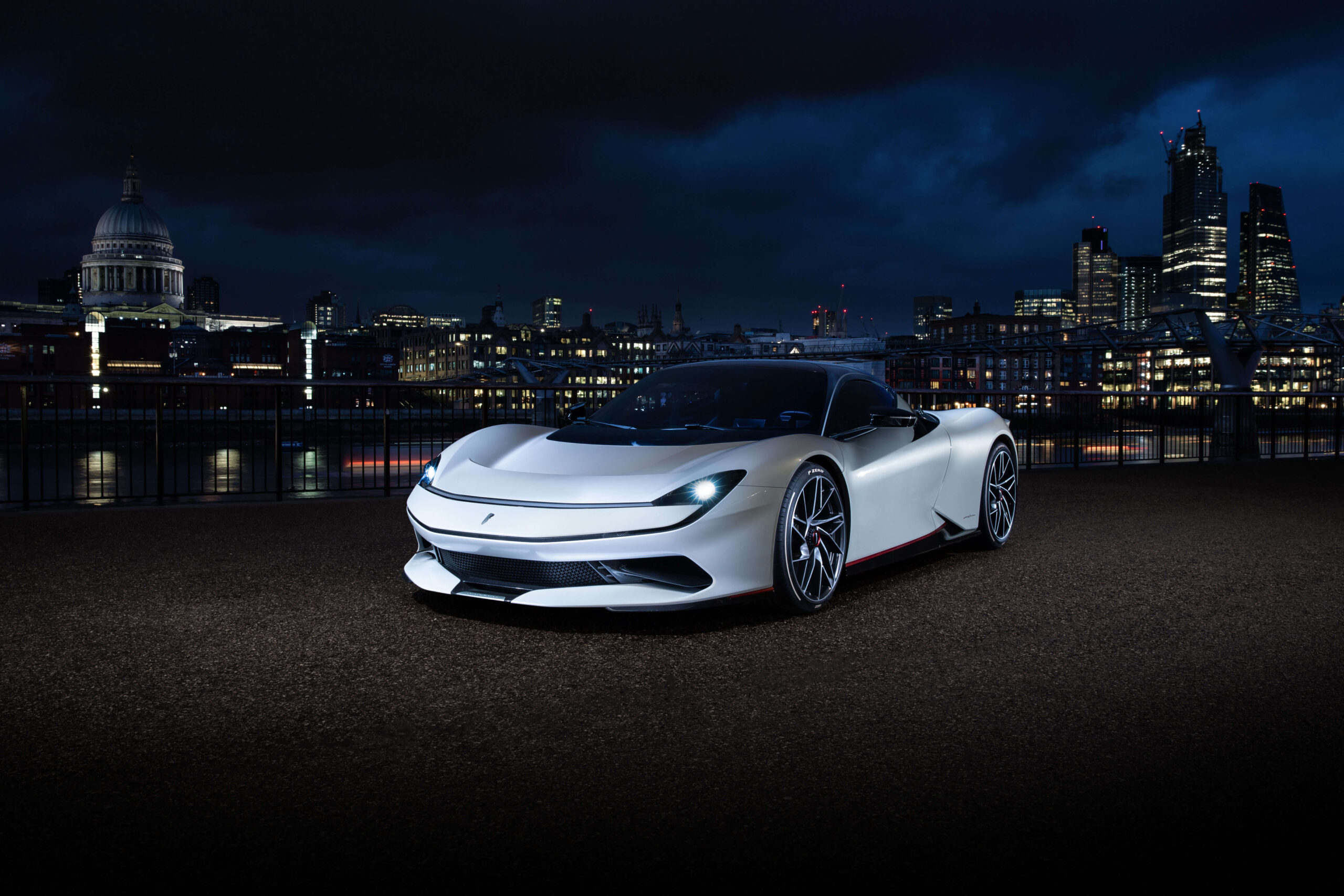For almost 90 years, a celebrated Italian automobile design house has been curating signature styling for marques the world over, waiting for the right car at the right time that would be worthy of bearing its founder’s name.
That car has arrived. And it sits firmly positioned at a crossroads unlike any in automotive history.
The 1,900-horsepower Pininfarina Battista is the first car ever to carry the Pininfarina name alone and the first fully electric ultra-luxury hypercar on the planet.
And it’s not an art board pipe dream. A working, tangible prototype has been shown to prospective owners in Vancouver and Toronto, signaling that deposit placement is open with North American deliveries slated to begin in late 2021.

Photo courtesy of Pininfarina S.p.A.
Four motors, one at each wheel, create a combined 1,696 pound-feet of torque, which the torque vectoring system can fully allot to the rear axle on demand. Power is tamed or unleashed using five drive modes that vary the drive experience between extreme and commuter-level tame. At its peak, the Battista has a limited top speed of 350 kilometres per hour, and it launches from 0 to 100 kilometres per hour in less than two seconds and 0 to 300 kilometres per hour in less than 12 seconds.
Once that capability is exhausted, the 800-volt fast charging system returns the 120 kWh lithium-ion battery to within 80 percent of its 450-kilometre driving range in 30 minutes.
The Battista’s overall weight is not published, though the battery undoubtedly comprises the majority. Formed in a T-shape, it sits behind and between the seats to position the majority of the car’s weight directly surrounding the car’s occupants. This creates a naturally low centre of gravity and what Pininfarina says is a near-perfect weight balance. The weight of the battery pack is offset as much as possible through the use of aluminum in the front and rear crash structures and carbon fibre in the body panels and monocoque. The split-design active rear wing generates downforce at varying rates and also acts as an air brake from higher speeds.

Photo courtesy of Pininfarina S.p.A.
According to Pininfarina, anything is possible around the use of colour and material in the interior. The display car demonstrates this through the independent use of black material on the driver’s seat and tan for the passenger. This complements the interior’s minimalist design approach: digital screens are focused entirely around the driver with a centre display providing critical gauge-related information, the left screen showing information on dynamics and performance, and the right managing media and navigation.
Among the final details yet to be implemented is the car’s unique sound profile. Since electric cars operate in near silence and will soon be required to emit warning sounds at low speeds in certain markets, a signature Battista sound created without artificial amplification remains in development.
Reception has been positive enough in North America that the original 50-car allotment has been increased to 60 units out of the 150 to be distributed worldwide, each of which will be hand-crafted at the historic headquarters of Pininfarina’s design house in Cambiano, Italy. Deposits are being accepted by Weissach Performance in Vancouver for Western Canada and by Pfaff in Toronto for Eastern Canada with pricing starting at $2.2 million U.S.
View more from Transportation.








